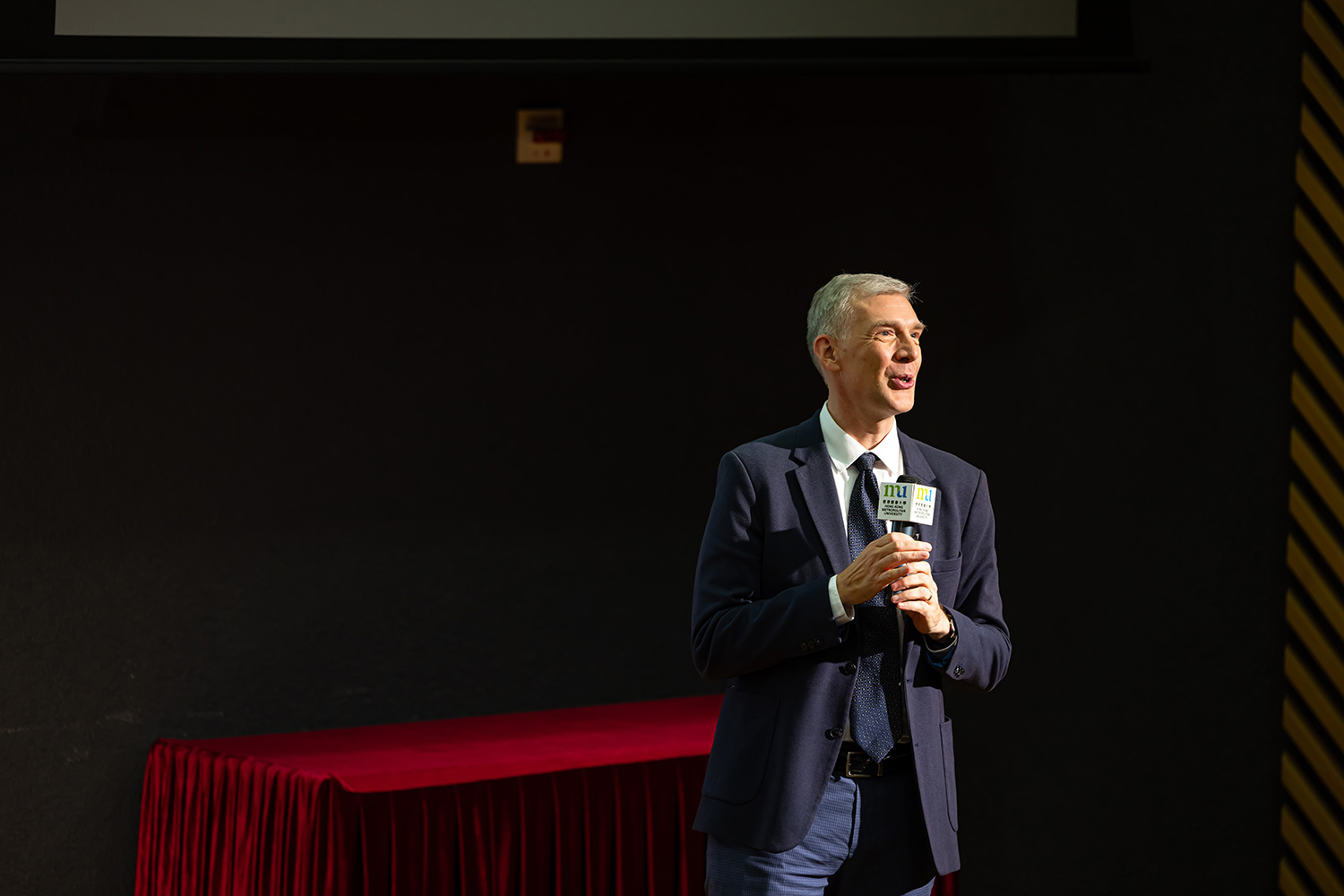Growing into an expansive role
As the University has evolved and expanded, so has the role of instructional designers. The introduction of face-to-face programmes gradually extended their supporting role into the classroom. But the most drastic changes arrived more recently. With the University reorienting itself towards a more comprehensive model, the massive expansion of face-to-face programmes called for new professional development needs.
Several years ago, the instructional designers started giving professional development seminars and workshops to academic staff on a wide range of subjects, such as technology, pedagogy, outcome-based education, learning activities, assessment and other current issues related to education. To give some recent examples, when COVID-19 struck, Ross and his colleagues were among the first to assess the functionalities of Zoom to help academic staff make a seamless switch to online classes. As ChatGPT stirred debate in the higher-education sector, they immediately studied its pedagogical implications and how to make positive use of it. “We've had to work very hard to keep ahead of the curve in order to offer professional seminars on those subjects,” says Ross. “Sometimes our learning curve is very steep.” To do so, he has drawn on a spirit advocated by the University: “One of the original aims of the OLI was to develop autonomous learners. I think that is absolutely crucial for instructional designers.”
Ross is familiar to HKMU staff as a frequent emcee at staff development events. He is also often heard and seen in multimedia materials produced by his team. Surprisingly, he recalls his initial experience with multimedia-related work as being “very challenging”. “Have you ever watched yourself on TV?” he jokes, and then quickly follows with, “It can be a bit uncomfortable, but you'll never learn faster.” Such experiences have helped him train academic staff in related skills, like producing course-introduction videos.
All-time dependability
Ross's greatest satisfaction in his long service as an instructional designer is in his team's consistent reputation for dependable quality in the midst of all the changes the University has seen. “I've worked with hundreds of course development teams over the years. There have been wonderful experiences, as well as awful ones, but I can say proudly that we have never failed to deliver a course,” he says. Presently, his team is buckling down to facilitate another big move in the University: the Academic Reform, which requires that all courses be condensed to fit the three-credit-unit denomination system. This has prompted the Schools to revise the courses at the same time. “I assure you, there are no courses from 1989,” he concludes on a witty note.















